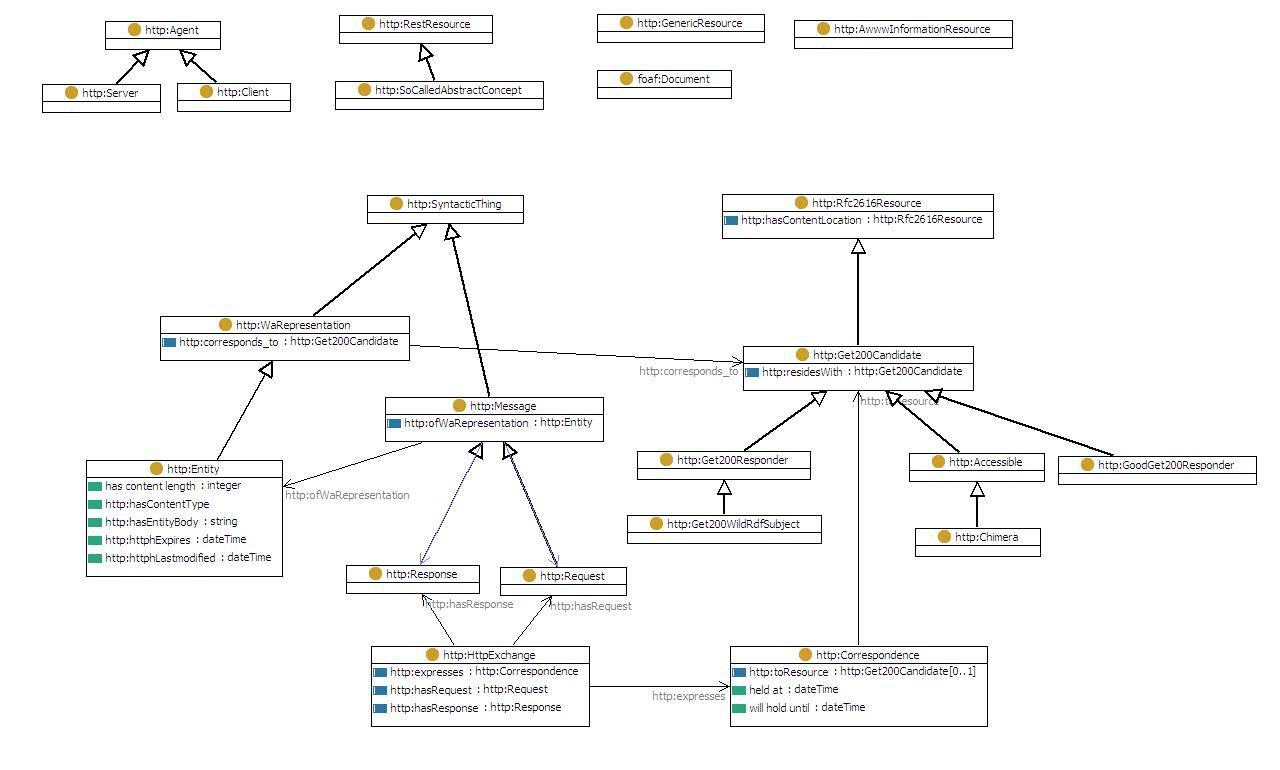- From: Williams, Stuart (HP Labs, Bristol) <skw@hp.com>
- Date: Mon, 6 Jul 2009 15:47:37 +0000
- To: Jonathan Rees <jar@creativecommons.org>
- CC: AWWSW TF <public-awwsw@w3.org>
- Message-ID: <233101CD2D78D64E8C6691E90030E5C832D33A65EB@GVW1120EXC.americas.hpqcorp.net>
Hi Jonathan, FWIW: a revised Topbraid diagram... > > Summary: Suggest WaRepresentation identified by > (bytesequence)x(media-type)x(last-modifed date/time) - > there's a role for OWL 2 compound keys :-) > > Including last-modified but not expires seems oddly asymmetrical to > me. I thought about this a little. It seems to me that the expiry date/time could be extended by the origin server without the representation itself having been modified. The expire date/time indicates when the representation is 'good' until which means either that the origin server/publisher regards it as acceptable that clients could get out-of-sync with it (loosely consistent - or eventual consistency) or there is a commitment that the representation will not be changed before the expiry period expires. I expect that the former (live with the inconsistency) is the more normal expectation. > I would rather remove the date/time so that we can more often say > the same representation corresponds to multiple resources, a la the > genont theory. I have no idea how carefully last-modified is > maintained by servers and proxies; perhaps what you suggest will work. I don't know either - I expect that for things based on filing systems last modified come straight from there. For things that are the output of processes... Last modified either relates to some underlying storage (if the information is available from there) or is 'now' - modulo possibly some server side caching that mitigates constantly recomputing the same responses - eg. I use a CMS for my canoe club web site [1] which caches the composite pages that it builds. > Let's try to figure this out over the coming months... Ok... > I also include Content-Language in the identity of a representation. Yes... That seems germain. > See new comments under HttpRepresentation. Ok... Will do... > Stuart -- [1] http://www.northavoncanoeclub.org.uk
Attachments
- image/png attachment: httpOverview.png

Received on Monday, 6 July 2009 15:49:09 UTC